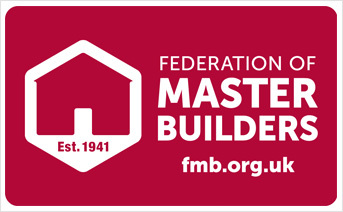Reforming the planning system is vital if we are to attract small housing companies to build more homes

There are numerous barriers facing small companies who wish to build houses. These include lack of access to relevant funding, a lack of workers with sufficient skills, and over-burdensome housing regulations. However, in my experience of discussing the matter with the members of the Federation of Master Builders, the main barrier facing building companies is the planning system. In this blog post, I will state exactly what these barriers are, and then discuss why getting to grips with these barriers is important in the context of the demand for more affordable homes.
The main aspects that need to be improved within the planning process for small builders are:
(a) The way that land is utilised and released
In a number of areas, the proportion of land allocated within local plans which is suitable for development by local small companies is very small. Councils should be more reactive in promoting small sites.
(b) Lack of resources within planning departments
The lack of resources within planning departments increases the challenge of enabling more small developments. Many of our members think that planning departments frequently allocate inexperienced officials to deal with smaller development sites, and that these officials do not have the authority to make the important decisions. This often leads to delays and uncertainty for small developers. We hope that the Welsh Government's plans to encourage more co-operation and amalgamating resources between planning authorities will mitigate the problem.
(c) Lack of flexibility within the planning application process
Many of our members believe that there is lack of flexibility within the planning application process, especially with regard to windfall applications.
(d) Lack of engagement between the industry and local authorities
The lack of communication between small builders and planning authorities is a problem. Both sides are to blame for this. Improving the situation would be beneficial to tackling some of the matters already identified.
Why therefore are these matters important in the context of building more affordable homes?
It's important that we look at the problem of lack of affordable homes in the context of the shortage of homes within the market in totality.
There are two main reasons for this. First of all, the greater the number of homes built within the private market, the greater will be the number of affordable homes built in accordance with Section 106 requirements. In addition, if more homes which fall outside the definition of affordable homes are built, this should stimulate more movement within the housing ladder that should in turn lead to releasing more affordable homes that already exist.
We see a discernible pattern if we look at the problems of the house-building sector over the past few decades. With the progress of time, there has been a substantial decrease in the number of houses built by small companies, and by now about three-quarter of new houses built in Wales are built by around half a dozen large companies that operate on a UK level. Only about 15% are built by small and medium companies. Whatever the reason, the result is the same; the large builders do not meet the demand by themselves.
It's clear that there is a need for more variety regarding the type of companies who built houses if the crisis is to be solved. One of the main barriers to small companies from being part of the market is the planning process. A more effective planning system would lead to more developments by small local companies. This, in turn, would lead to building more affordable homes.
We look forward to co-operating with Community Housing Cymru, the Homebuilders Federation Wales and other stakeholders to resolve some of the barriers facing us.
Ifan Glyn
– Federation of Master Builders Cymru
--
Are you attending the Development Zone at CHC’s One Big Housing Conference next week? Come along to our panel session on planning! https://chcymru.org.uk/en/events/view/2017-one-big-housing-conference